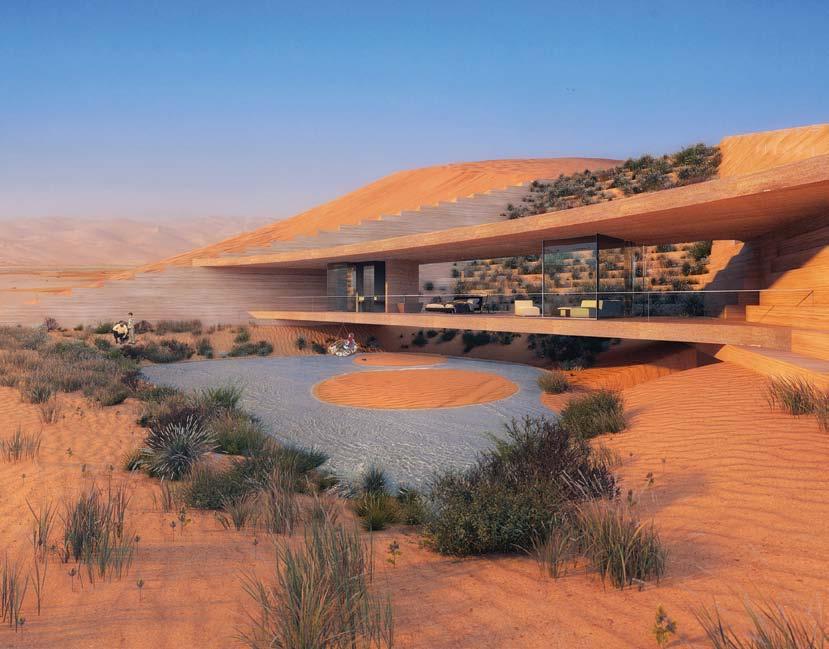
4 minute read
rub’ al Khali desert resort
By: x-architects
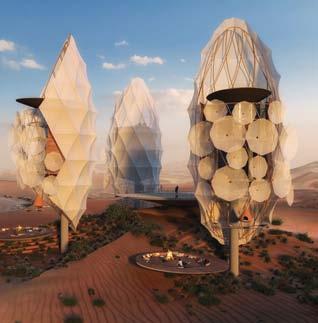
Advertisement
A luxury desert hideaway resort located in the Arabian Peninsula’s empty quarter in Saudi Arabia, known as Rub’ Al Khali sounds like the ultimate escape. However, when you’re dealing with the world’s largest sand sea, holding about half as much sand as the Sahara Desert and the terrain is covered with 250-meter-high reddish orange sand dunes, interrupted only by white salt flat called ‘Sabkhas’, its takes a great deal of ingenuity to turn this ultraharsh environment into a luxury retreat.
The vast emptiness of the desert posed a major challenge for X Architects, the company tasked with designing the new resort. Principal architect and cofounder of the Dubai based Architecture firm, Ahmed Al-Ali explained the complexities of such a project: “We go to the desert to become one with nature, experience solitude and ponder about creation. Scarcity intensifies our awareness of subtle differences. We start to notice the magical spectrum of light throughout the day. At night, the desert transforms magically: the air is cooler, stars emerge like the Arabian Nights tale, and darkness has infinite shades! Exquisite indigenous plants are shaped beautifully and protect themselves from the extreme environment. The wind becomes like a land artist, moving similar sized sand particles and minerals in one zone to reveal the richness of its intense color.”
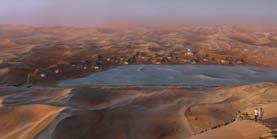

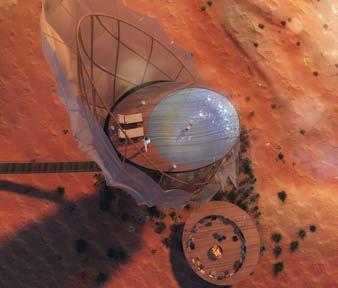
Farid Esmaeil, co-founder of X Architects continued: “to ensure that we intensify the experience of visitors with their surroundings, we created a constellation of architecture that is strategically placed on the vast terrain using its unique qualities. For example, we embedded dune shaped units in a ‘Roman Theatre’ configuration that offer a remarkable view of sabkhas, however, each unit remains private! Other units grow vertically like
a desert flower and are placed on the highest point of the site, offering uninterrupted views to the stars. A white spa carpet, created out of salt, intensifies the minerals existing on the salt flats which are used for their healing qualities. A ‘living room’ hidden between ‘walls of sand’ offers visitors a calm, serene and tranquil environment.
“The desert flower Cistanche Tubulosa, indigenous to Rub’ Al Khali, inspired the elongated form and enclosure of the flower villa structure. The elevated position of the villas gifts residents with a complete view of Rub’ Al Khali’s expansive desert dunes and ensures complete privacy. The structure’s vertical habitation emphasizes the relationship between desert dwellers and the starry sky. A polymer fiber mesh encloses the structure partially to minimize exposure to sandstorms and harsh sun, collect water for the indigenous garden and supports the structure.
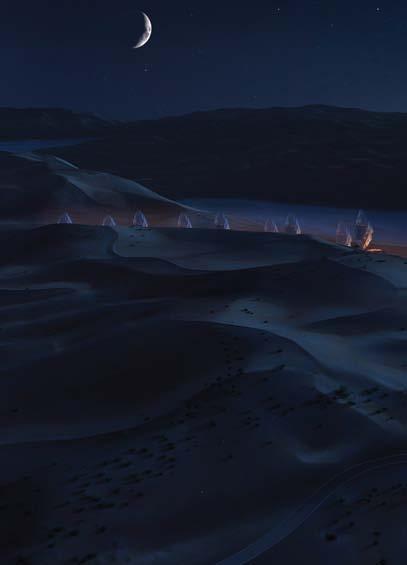

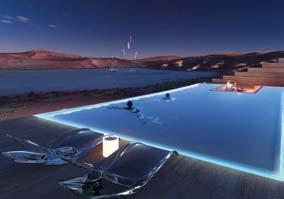

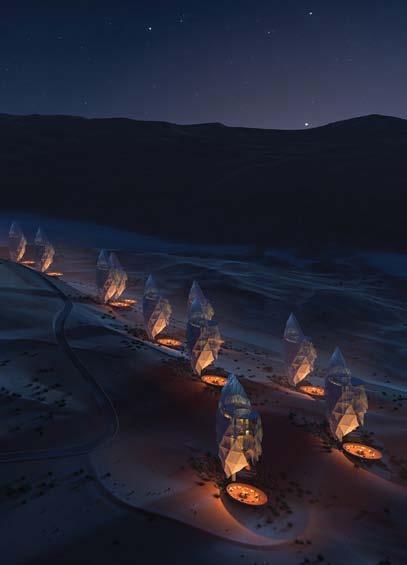

“The Dune units are shaped in the form of sand banks that resemble the existing texture of the terrain, leaving behind a trail of natural Architecture that respects the site and context. Our proposal results as a minimal intervention to the context, rather than a direct interference which brings back a piece of the desert. A vertical garden was incorporated to create an ecosystem that is served by the reuse of water and vegetation, and enhanced by the stepped back wall that seamlessly sinks into the existing sand dunes.

The formation of dunes and the carving nature of the desert inspired the conceptual approach of the Main Arrival Hall. To create a strong relationship between architecture and landscape, the interior spaces were carved from the landscape and dunelike columns are filled by time with sand. The roof includes skylight openings that radiates natural light and brings the desert landscape into the interior. Using a similar organization system as the interior, the exterior begins to form cascading pools, terraces, and garden spaces that extends out of the landscape. Recycled grey water is used as a sustainability method for the pool and water features.
To highlight Rub’ Al Khali’s flat land/sabkhas, the spa takes the form of a white salt carpet with underground spaces defined by a series of one directional walls. Sunlight is set to filter in occasionally through incisions/cuts in the surface salt carpet which was created through concentrating and compacting all surface salt into a flat platform. All spaces celebrate privacy, serenity and relaxation and use the healing quality of salt to create a natural experience. Programs extend from the serene ambiance of the underground to sun lit spaces, and desert view treatment rooms above ground.”








